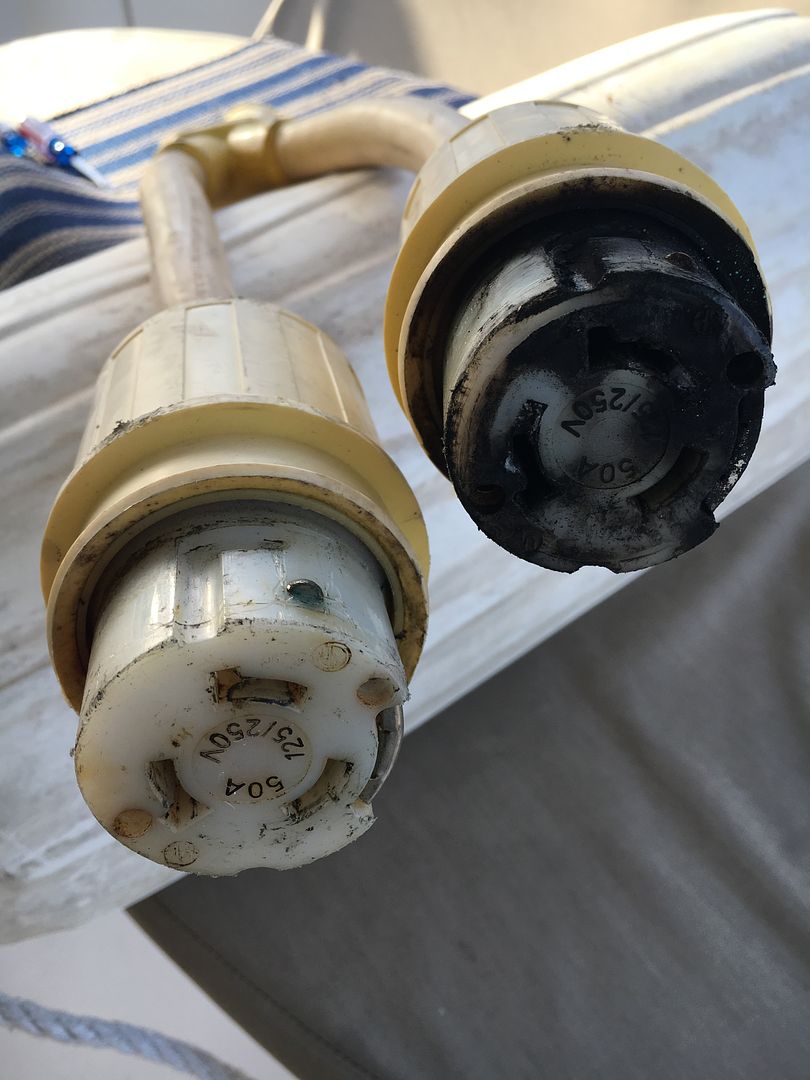FootballFan
Well-Known Member
Couple of weeks ago was securing the boat.
In ten years of dealing with shore power cords, I did the unthinkable. Dropped a cable in the water.
Had never considered what to do at that point. Never thought I would make that mistake, no idea on next step. So I gathered the collective wisdom of those standing around me. Swung the cable like a giant slingshot wind up, trying to get the water out, then liberally applied that fix all of WD40 to displace any moisture.
Fast forward for a couple of weeks. Showed up at the boat and discovered a problem.
This is the female end that the "got wet" plug went into (the photo I had handy), the male plug looks about the same. In that slip I was using a splitter to hook both cables up.

OK, so that approach didn't end up too well. Shorted out, burning both the male plug on one of my Glendening cables and the female side of the splitter.
Got the parts, technician is going over today to replace the plugs for me. Not the end of the world, I have another set up plugs on the bow and happened to have 2 50Amp cables on the boat, so plugged in for the weekend. No damage anywhere other than the cables.
The question for this post - if this happened to you what would you have done. I didn't have a plan, never thought I needed one. My plan was - DONT DROP THE CABLE in the water - duh, that didn't work out.
Anyway just curious if you have ever thought through or gotten advice on what to do in that situation?
Mark
In ten years of dealing with shore power cords, I did the unthinkable. Dropped a cable in the water.
Had never considered what to do at that point. Never thought I would make that mistake, no idea on next step. So I gathered the collective wisdom of those standing around me. Swung the cable like a giant slingshot wind up, trying to get the water out, then liberally applied that fix all of WD40 to displace any moisture.
Fast forward for a couple of weeks. Showed up at the boat and discovered a problem.
This is the female end that the "got wet" plug went into (the photo I had handy), the male plug looks about the same. In that slip I was using a splitter to hook both cables up.

OK, so that approach didn't end up too well. Shorted out, burning both the male plug on one of my Glendening cables and the female side of the splitter.
Got the parts, technician is going over today to replace the plugs for me. Not the end of the world, I have another set up plugs on the bow and happened to have 2 50Amp cables on the boat, so plugged in for the weekend. No damage anywhere other than the cables.
The question for this post - if this happened to you what would you have done. I didn't have a plan, never thought I needed one. My plan was - DONT DROP THE CABLE in the water - duh, that didn't work out.
Anyway just curious if you have ever thought through or gotten advice on what to do in that situation?
Mark

